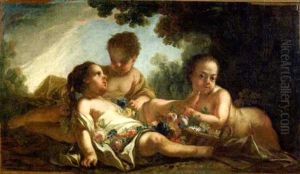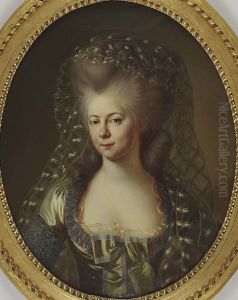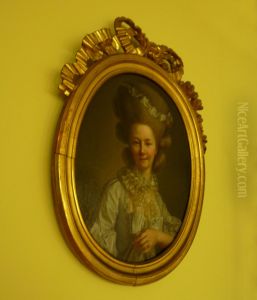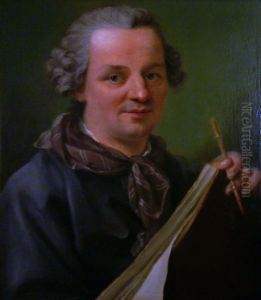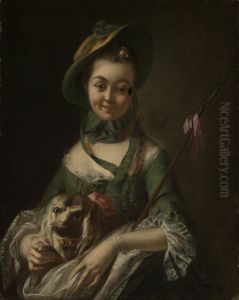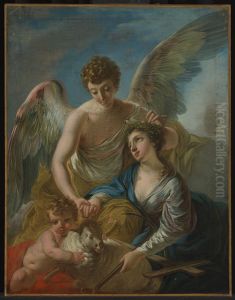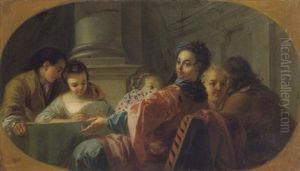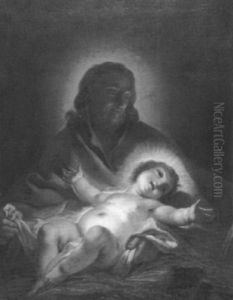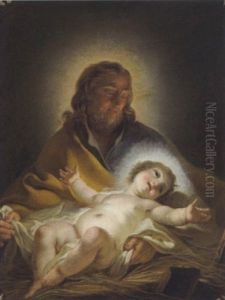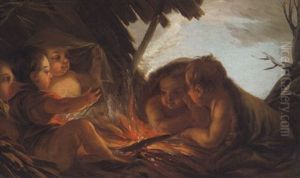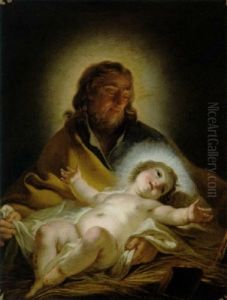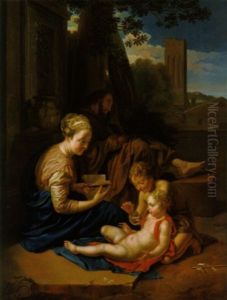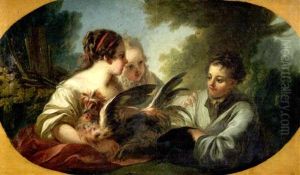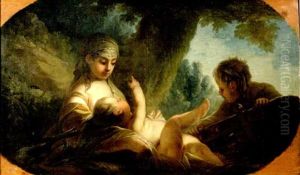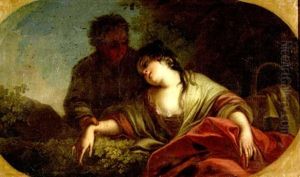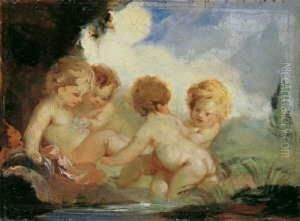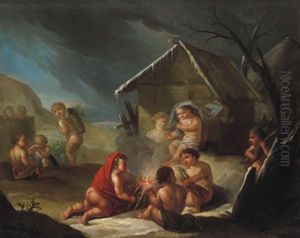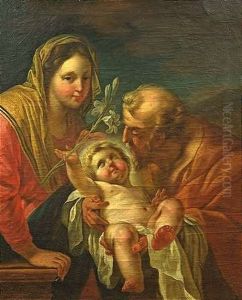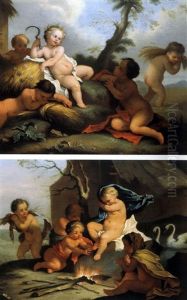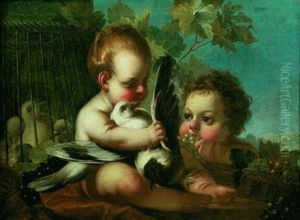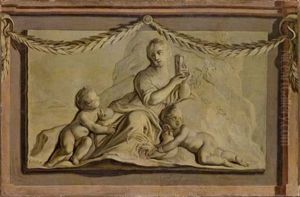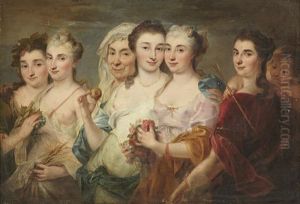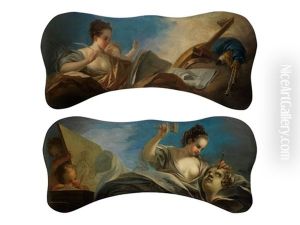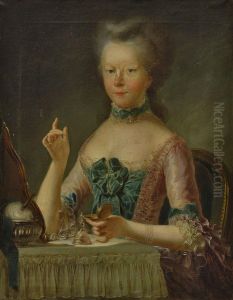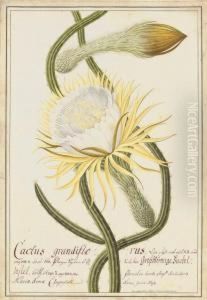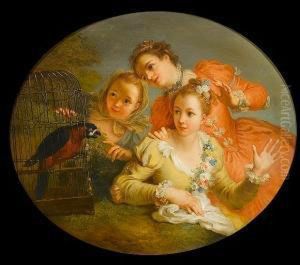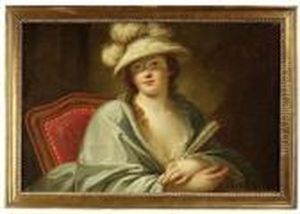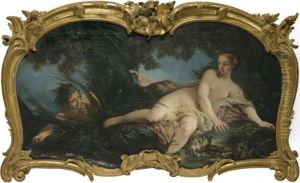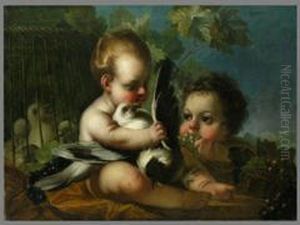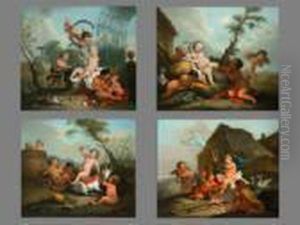Joseph Melling Paintings
Joseph Melling was a notable artist born in 1724 in Villingen, a small town in the Black Forest region of Germany. He was the son of Joseph Sebastian Melling, a painter and engraver, and his artistic talent was recognized early on. Melling's initial training was under the guidance of his father, which was a common practice for artists during this period. He then continued to develop his skills, likely engaging in a traditional apprenticeship and perhaps traveling to study with other artists, which was also typical of the era.
Melling's work primarily consisted of paintings, and he was particularly skilled in portraiture and religious themes. His style was influenced by the Baroque and Rococo movements, which were prevalent in European art during his lifetime. The Baroque influence is evident in his dramatic use of light and shadow, as well as the emotional intensity of his subjects. The Rococo influence can be seen in the lighter colors, graceful lines, and a more playful approach to some of his compositions.
In the mid-18th century, Melling moved to France, where he worked for several important patrons, including members of the nobility and the church. His career in France was marked by success, and he became well-known for his artistic abilities. He was also active in the artistic community, interacting with other artists and intellectuals of the time.
The French Revolution, which began in 1789, greatly impacted the art community and Melling's career as well. The social upheaval and the dramatic shifts in power led to a decline in traditional patronage for artists like Melling, who had relied on the support of the church and the aristocracy. Despite the changing times, he continued to work until his death in 1796.
As an artist of the 18th century, Joseph Melling's legacy is intertwined with the art movements of his time. He contributed to the visual culture of the period, and his works are a testament to the skills and aesthetics of the Baroque and Rococo periods. His paintings may not be as widely recognized today as those of some of his contemporaries, but they remain a part of the rich tapestry of European art history. Melling's death marked the end of an era, just as Europe was about to enter a period of profound change, both politically and artistically, with the onset of the Romantic period.
